Heroic Failure? Britain’s Churchill Tank

The Allied raid on Dieppe, France, on 19 August 1942, was a curiously tragic footnote to the bloody saga of World War II. The German Blitzkrieg had overwhelmed Allied defenders and overran western Europe in a matter of weeks. Once the British had opportunity to fall back to their island fortress and regroup, it was time to scheme out the next stage of the war.
American war materiel was finally flowing in, and troops evacuated from Dunkirk two months prior without their weapons were gradually being re-equipped. However, there existed very little institutional knowledge of modern amphibious assaults. Considering retaking Europe would undoubtedly involve a cross-Channel invasion on an unprecedented scale, Allied war planners felt we needed a dress rehearsal. That operation was focused on the French port city of Dieppe.

The strategic goals were questionable at best. Everyone on both sides of the English Channel knew that the Allies were in no position to establish a permanent lodgment. As a result, the objective was simply to land on the French coast, piddle about for a bit, and then reboard ships and head back to Britain. The operation was marketed as a morale-building exercise for the folks back home. Were I a soldier involved, I would struggle to put my life on the line for such nebulous ideals as those. In the end, the Dieppe raid was an unmitigated disaster.
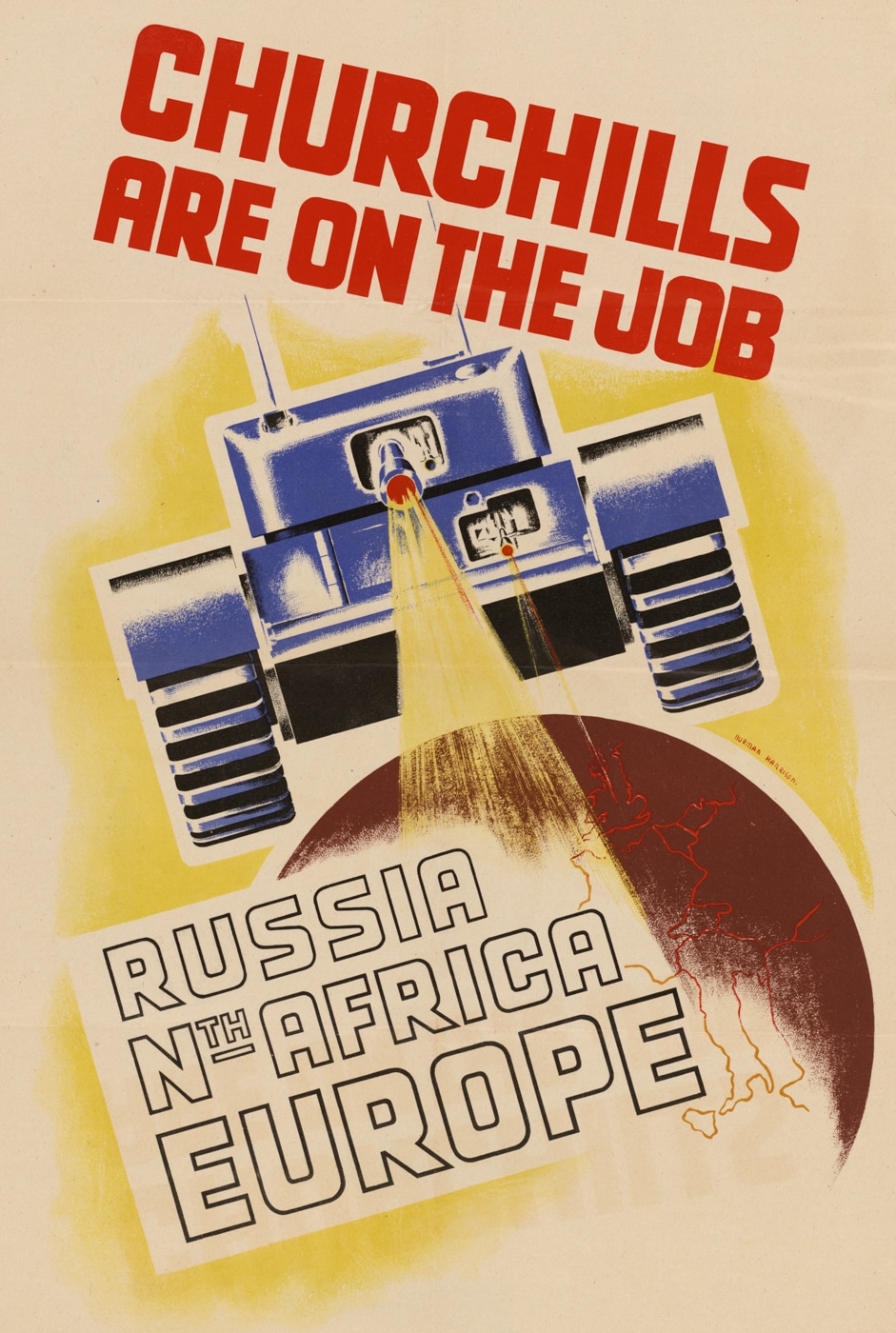
Of some 6,050 inexperienced, mostly Canadian infantry, 3,623 were killed, wounded, or made prisoner in the first 10 hours. Little if anything of substance was accomplished. However, both the Allies and the Axis did learn a great deal about amphibious operations in both the offense and the defense.

The criticality of artificial harbors, integrating tactical air support into the ground plan of maneuver, and including tanks on the invasion beaches were all major lessons learned. Significant among those was the performance of armored vehicles in an assault from the sea. The primary Allied armored vehicle of the Dieppe raid was the Churchill tank. Amidst the unmitigated carnage that was Dieppe, the Churchill actually performed surprisingly well.
Churchillian History
British tanks during World War II fell into one of two broad categories. Cruiser tanks were fast and relatively lightly armored. They inherited the mission of the horse cavalry and were crafted with mobility as their primary attribute. By contrast, infantry tanks were slower, more heavily armored, and tough. Infantry tanks were designed to lead ground assaults and slug it out toe-to-toe with enemy defenders. The Churchill was an archetype for the infantry tank genre.

The Churchill wasn’t named after the famed British Prime Minister Winston Churchill. It was actually named after John Churchill, 1st Duke of Marlborough. John Churchill was a hero of the wars fought against the French King Louis XIV in the early 1700’s. The Prime Minister was a direct descendent through his father. Winston once jokingly opined, “That is the tank they named after me when they found out it was no damn good!”
Details About the Churchill Tanks
The Churchill was emergently developed in the early dark days of World War II and shoved into both production and service before being adequately tested. Early versions were described as being under-powered, under-gunned and unreliable. In fact, Vauxhall, the manufacturer of the Churchill, included an ominous leaflet tucked into the operator’s manual that read, “Fighting vehicles are urgently required, and instructions have been received to proceed with the vehicle as it is rather than hold up production. All those things which we know are not as they should be will be put right.” I doubt that exactly inspired confidence in its crews.

Early Marks featured a quick-firing 2-pounder (40mm) gun in the turret along with a quick-firing 6-pounder (57mm) in a limited-traverse mount in the front of the hull. Later Marks dispensed with the hull gun and incorporated the same short-barreled 75mm cannon used on early American Shermans in the turret. Final versions utilized a 95mm turret-mounted gun that was considered fairly massive for its era.
The basic chassis, though indeed relatively underpowered, offered superb armor protection. The actual amount of hardened steel armor standing between the crew and the enemy exceeded that of the vaunted German Tiger I. Even underpowered, the Churchill nonetheless offered exceptional mobility. This is what made it a viable tank during the Dieppe raid.
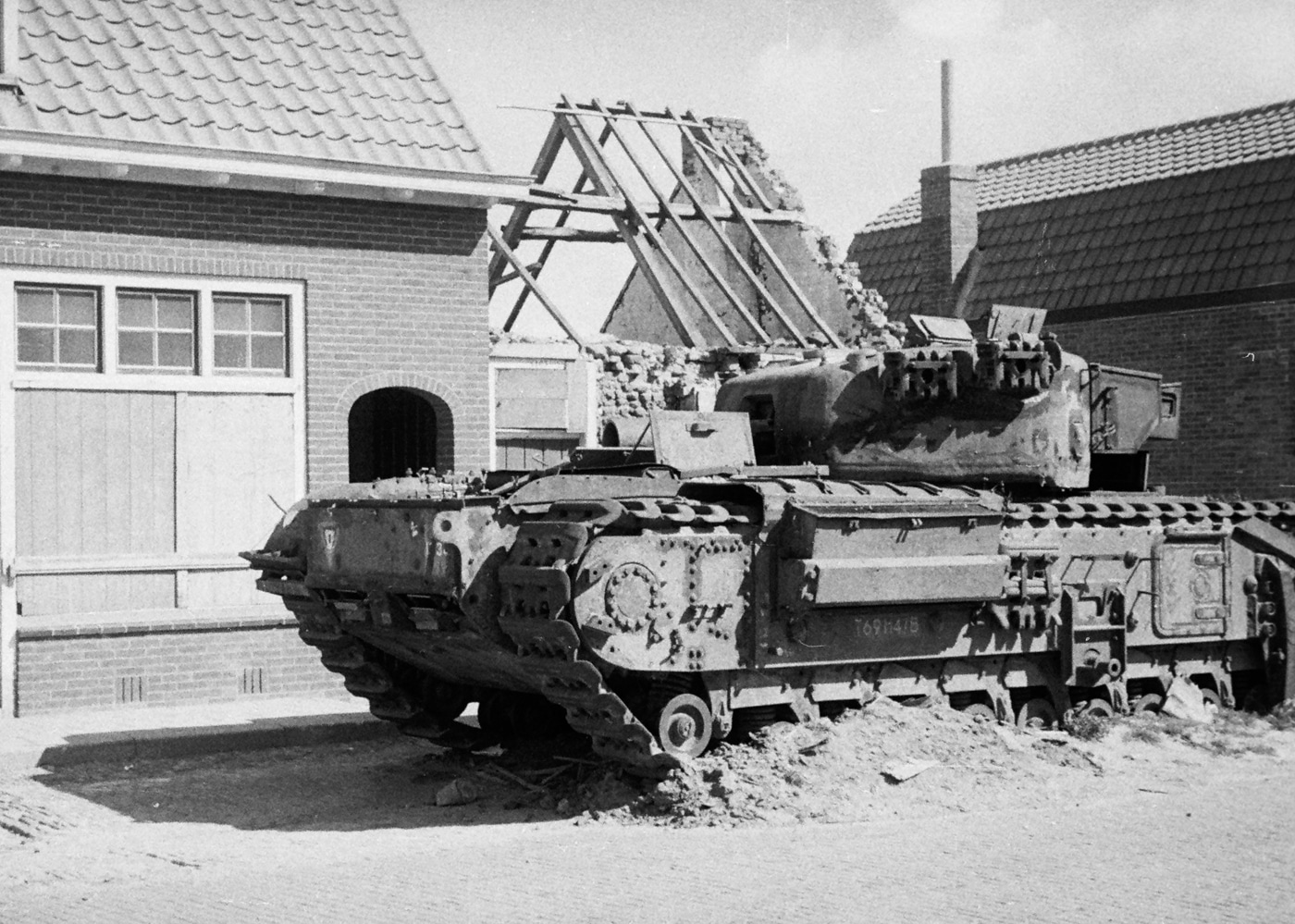
The basic Churchill chassis was used to form the AVRE (Armoured Vehicle Royal Engineers) vehicle. Developed in the aftermath of Dieppe, the AVRE was specifically configured to assist in mine-clearing, demolition, bridging, and obstacle reduction. Flamethrower versions of the Churchill featured a flame projector in place of a main gun and pulled a trailer containing gelled fuel to supply its primary armament. These fearsome flame tanks were referred to as Crocodiles.
Design
The Churchill was contrived for ease of manufacture, so most of the hull was comprised of flat steel plates. Early versions were riveted, while later marks were welded. Welding resulted in a chassis that was stronger, 4% lighter, and quicker to build.
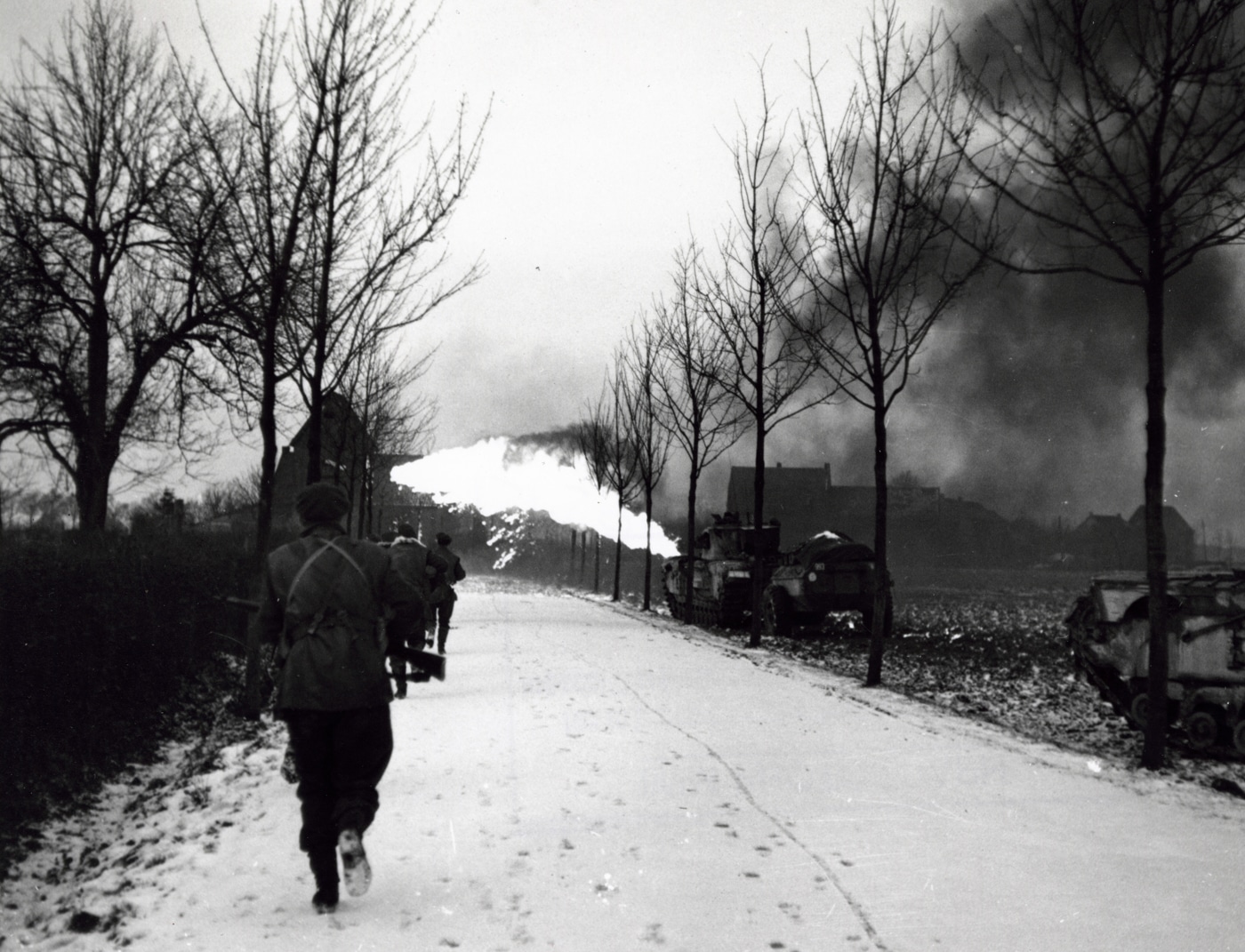
One of the most distinctive aspects of the design was the 11 sets of relatively small bogey wheels comprising the suspension. These bogeys were, to a degree, redundant. So long as the track remained intact, the tank remained mobile even with the loss of a bogey wheel or two. Only 18 of the 22 bogeys actually supported the vehicle. The lead pair helped pitch the nose up when crossing obstacles, while the aft set acted as track tensioners.

The driver of the Churchill controlled the vehicle by means of a tiller bar. Our modern M1 Abrams uses a similar system today. By contrast, wartime Shermans utilized a pair of steering sticks, while German Tigers actually had a wheel.
Operational Performance
Despite being rushed into production, later Churchill variants eventually became proven and effective weapon systems. The tank was used throughout World War II and into Korea as well. A total of 5,640 were built.
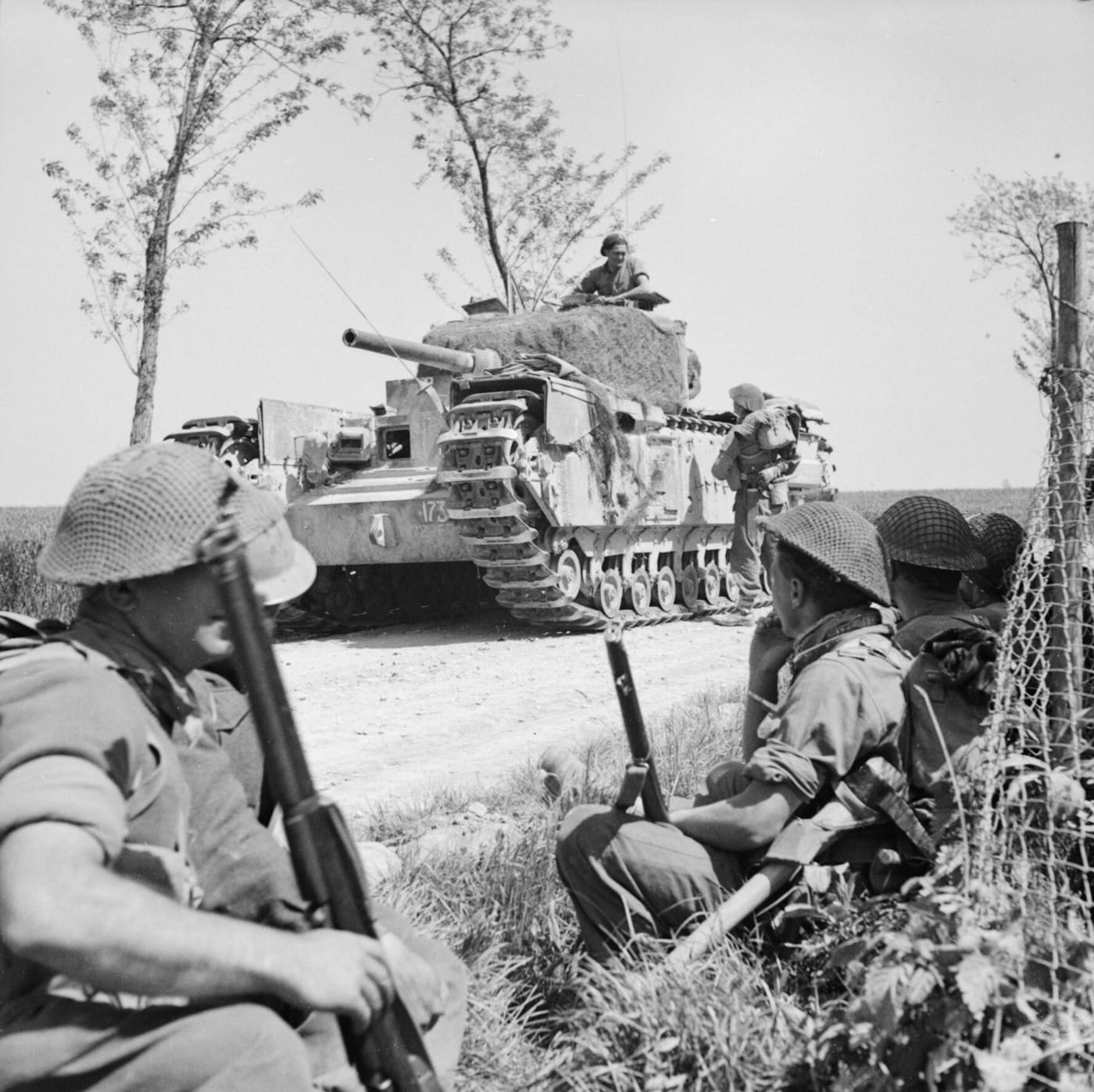
The Churchill performed admirably in North Africa against the German Afrika Korps, particularly during the Second Battle of El Alamein. On 21 April 1943, while fighting in the Battle of Longstop Hill in Tunisia, a Churchill in hull defilade fired upon an attacking German Tiger I. The 57mm 6-pounder shot deflected into the turret ring, causing the Wehrmacht crew to abandon the vehicle. This disabled German tank, Tiger 131, was subsequently recovered, restored, and put on display at the Tank Museum at Bovington, England. We all saw it in the 2014 David Ayer movie Fury.
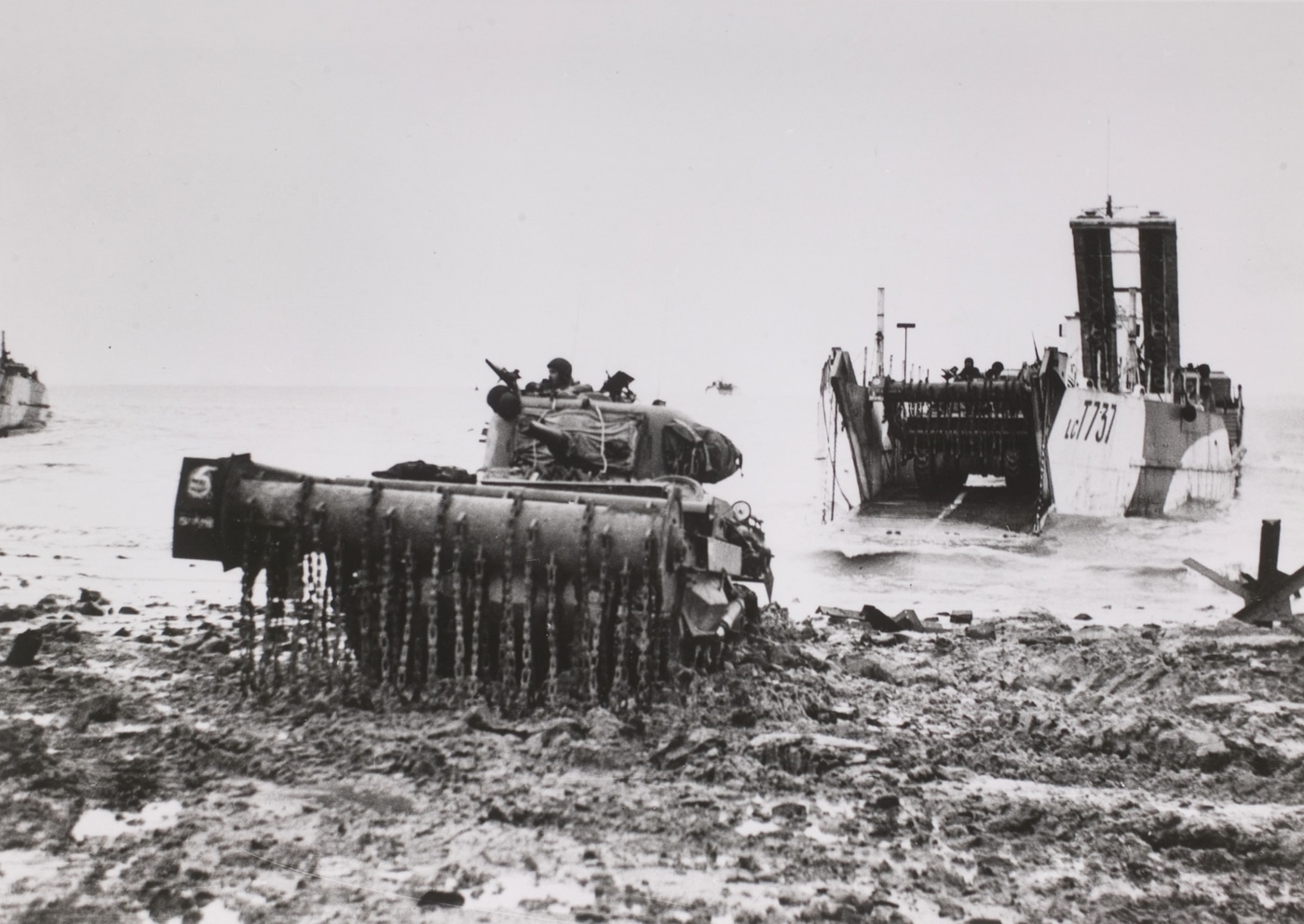
During Operation Veritable, the Allied pincer movement that became known as the Battle of the Reichswald, Churchill tanks successfully traversed soft, muddy, forested ground that had previously been believed to have been too inhospitable for heavy armor. Throughout North Africa, Italy, western Europe, and India, the Churchill played a crucial role in the ultimate Allied victory. 301 copies were shipped to the Russians as part of Lend-Lease, 43 of which were sent to the bottom of the North Atlantic by German U-boats. Soviet troops accustomed to the unrivaled ruggedness of their own T34’s purportedly did not care much for them.
Ruminations
The Churchill tank was birthed in England’s greatest hour of desperation and was subsequently upgraded through eight different Marks. The latest versions produced in 1944 were totally different vehicles from those primitive variants rushed out of the Vauxhall factory with the Germans leering across the Channel.

Imbedded within the British Churchill we see the indomitable spirit of the English people who prevailed against long odds during the darkest days of the Second World War.
Editor’s Note: Please be sure to check out The Armory Life Forum, where you can comment about our daily articles, as well as just talk guns and gear. Click the “Go To Forum Thread” link below to jump in and discuss this article and much more!
Join the Discussion
Read the full article here









